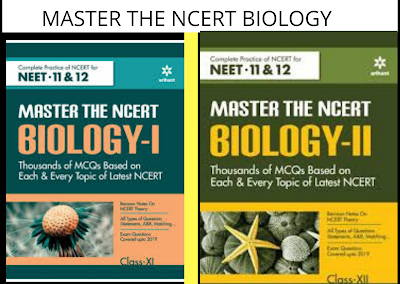Aakash Crash Course Module NEET pdf AAKASH crash course book pdf has been written specifically for the students who want to complete their syllabus within 60 day or who Want to Revise whole syllabus for Neet exam . AAKASH CRASH course module help you to complete syllabus in very short interveral of time . AAKASH crash course module pdf designed in such a way it help aspirant to cover syllabus as well as revise all concept with thousand of question in a very limited period of time . Aakash crash course module is one of the ideal book for PCB crash couse designed by expert faculty of AAKASH institute designed according to NEET exam . So by giving your hundred percentage and solving thousand of numerical, PYQS ,remembering all the concept , i assure you will land to top medical college of INDIA. SILENT FEATURES About Aakash Crash Cours Book pdf AAKASH PHYSICS PART 1 DOWNLOAD AAKASH PHYSICS PART 2 DOWNLOAD AAKASH CHEMISTRY PART 1
[PDF] Master the ncert Neet biology
Arihant Master the ncert for Neet biology pdf master ncert biology pdf download master of ncert biology pdf download master the ncert biology pdf , master the ncert biology pdf download , master the ncert biology arihant pdf free download , master ncert biology pdf , arihant master the ncert biology vol 1 pdf download , arihant master the ncert biology vol 2 pdf Arihant master the ncert BIOLOGY published by expert team of Arihant divided into two volume according to ncert pattern 1 . arihant master the ncert biology vol 1 2. arihant master the ncert biology vol 2 In which volume 1 focus for class 11 syllabus and volume 2 focus on class 12 syllabus. Master the ncert biology is the one of the best book for class 11/ 12 PCB student as well as for competition exam like NEET . Master the ncert biology book mainly focus on Neet students by introducing hundreds of questions from each and every line of NCERT BOOK along with last year questions paper and ncert exemplar questions .
[Pdf] N awasthi physical chemistry pdf
Narendra Avasthi physical chemistry PDF | JEE download N avasthi physical chemistry pdf book published by Balaji Publication is one of the best book for physical chemistry written by a renouned Director of Vibrant academy N arendra avasthi sir with the aim to provide vast number of question arranged in systematics manner for Physical chemistry. Narendra avasthi physical chemistry pdf is result of his immense experience and passion to ensure grand success of student. N avasthi physical chemistry pdf provides a brief theory of each chapter and the content is designed in a very systematic way, . Each chapter of N avasthi physical chemistry contains problems in graded methods or in three stages that make it easier for the students to solve the problem easily and understand the concept. Narendra avasthi physical chemistry book features 1. Narendra avasthi physical chemistry for jee is designed in a very systematics manner by experienced team of Balaji publication and N


